How to DJ EDM
EDM Tutorials and mixing techniques
If you’re interested in DJing with EDM music and want to know how to mix EDM music like a pro, you’ve come to the right place!
I will walk you through the process of DJing EDM so that your music sounds amazing and the crowd goes wild every time.
I’ll also give you my best tips on how to get started as an EDM DJ and what equipment you need to become a world class EDM DJ!
Let’s get going…
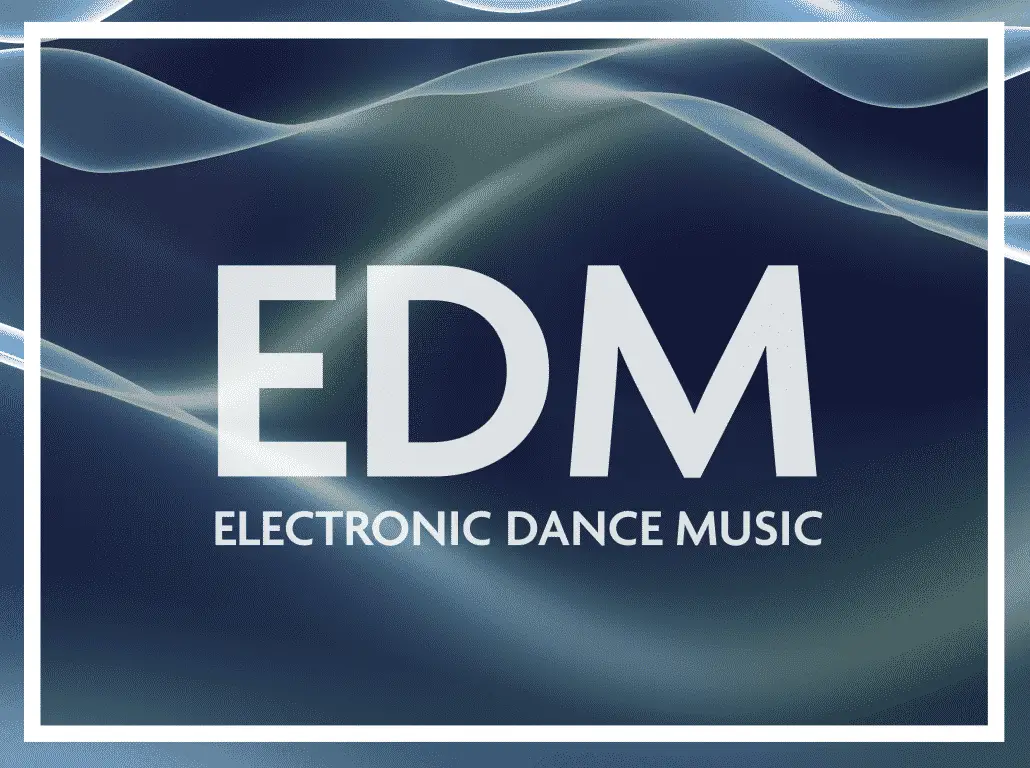
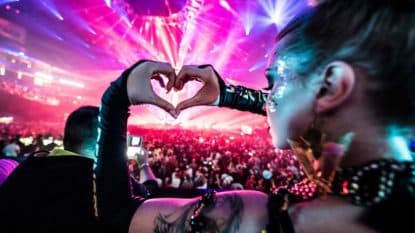 Electronic dance music (EDM) is a broad range of percussive electronic music genres made largely for nightclubs, raves and festivals. While often used to describe a specific genre, it is more accurately an umbrella term for several related styles of music that have influenced one another over time.
Electronic dance music (EDM) is a broad range of percussive electronic music genres made largely for nightclubs, raves and festivals. While often used to describe a specific genre, it is more accurately an umbrella term for several related styles of music that have influenced one another over time.
The biggest common denominator with all forms of EDM is that they generally feature synthesizers in place of traditional instruments.
As a result, there’s no singular sound you can point to as EDM—artists like Skrillex represent as many different sounds as there are out there. EDM has gained in popularity over recent years, especially in America where concerts featuring top-tier DJs bring tens of thousands of people together to listen live.
Many who don’t know much about EDM mistakenly think that it refers only to house or techno; while those are two main subgenres, they certainly aren’t alone. There are dozens upon dozens of others including trance, drum and bass, breakbeat and glitch hop; new subgenres pop up every year just as others fade away or mutate into something else entirely.
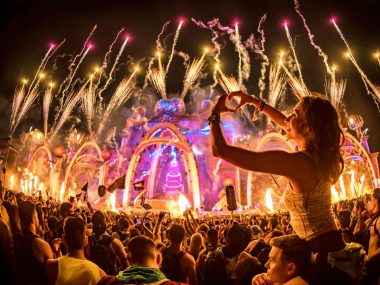 Today’s market is incredibly diverse but many fans believe that modern producers take too much from other artists rather than innovating their own distinctive sound.
Today’s market is incredibly diverse but many fans believe that modern producers take too much from other artists rather than innovating their own distinctive sound.
The list of biggest names in EDM today is more akin to a who’s who as multiple styles of music often cross-pollinating into one another. It can be hard for newcomers to find their favourite artists among the sprawling sea of names that includes guys like Benny Benassi and Diplo or genres including glitch hop and psytrance.
So lets take a look at the sub genres that make up EDM.
Trance
Still dominating the EDM scene, Trance has evolved over the last few decades and sprouted yet more sub genres of its own but its fair to say that its the high energy synth sound you hear in a lot of mainstream EDM tracks.
Born in the early 90s in the clubs of Berlin, its floor-filling energy filled anthem sounds are highly memorable and fully designed to whip the crowd up in to a frenzy. I would go so far as to say Trance leads the way in the EDM scene as it often crosses over in to mainstream popularity. Around 125 – 135 BMP, that saw-tooth synth sound with epic reverbs and thumping kick drums have created some iconic sounds over the years.
Trance tracks aren’t always the easiest to mix together as they are often competing to be the most anthem like sound possible. It can make things more complex when you’ve got two heavyweight sounds vying to be champion.
Check out this great example track from two of the biggest names in Trance EDM. Steve Aoki and Armin Van Buuren.
Drum and Bass
Born in the mid 90s out of the UK rave scene, Drum & bass or “Jungle” could be seen as an entirely different musical genre, but there is a more mainstream EDM lead Drum & Bass sound emerging in the last few years that is undoubtably EDM.
Expect around 160 – 170 BPM with deep sub baselines, intricate percussion and blasting serious sounding synth riffs. There’s plenty of EDM DJs that like to mix between EDM’s sub-genres and switch their set up from trance to Drum & Bass and back again.
A great example of this is Fatso VIP by Metrik. Definitely Drum & Bass, Definitely EDM. Enjoy this track for a few minutes and imagine a sea of adoring fans jumping up and down during your EDM DJ set.
If you want to know how to DJ Drum and Bass check out our article.
House
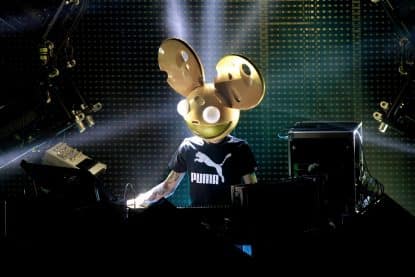 From the smokey Chicago nightclubs of the early 80s to the stadium venues of the 21st Century, House is the absolute Don of the dance music scene. Its flavours are many but in EDM terms House is where the big money is.
From the smokey Chicago nightclubs of the early 80s to the stadium venues of the 21st Century, House is the absolute Don of the dance music scene. Its flavours are many but in EDM terms House is where the big money is.
The reason for this is clear, it has the longest history, the biggest legacy, the most amazing legendary names and a sound that appeals to a broad spectrum of music lovers.
While there’s plenty of House styles that are definitely not EDM, there’s plenty that flirt with EDM sounds and plenty that are just down right slap bang in the middle of what makes “EDM” what it is.
Think Calvin Harris, Daft Punk, David Guetta, Martin Solveig, Zedd. All names you’ve probably heard of as they’ve all hit the charts in recent years with their popular EDM tunes.
You’ll probably be playing EDM House more than any other genre if you’ve not already picked a niche. It is at the very least the best place to start if you’re a newcomer to the space, as knowing your tracks well is half the battle. So if you’re playing songs you recognise to a crowd who recognise them too, you’re on your way to becoming a true EDM DJ.
Looking for a prime example of House EDM? This one sums it up nicely. Pop + EDM = absolute anthem.
Progressive House
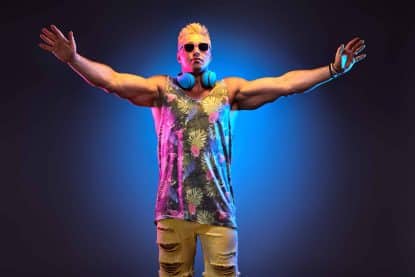 This is one of my favourite EDM styles as it adds a little extra class and fitness to the otherwise brash and bold anthem tracks that dominate most EDM sub-genres.
This is one of my favourite EDM styles as it adds a little extra class and fitness to the otherwise brash and bold anthem tracks that dominate most EDM sub-genres.
Don’t get me wrong there’s some huge sounds emanating from nearly every Progressive House track but there’s no rush to reach them, with long progressions and build ups, long sweeping breakdowns leading in to huge reverberating climaxes.
The extra length of Progressive House tracks is what lends itself to being much more creative with your EDM DJing techniques. Plenty more loops to work with, time to add effects and much longer transitions that can blend seamlessly together.
If you love those synth sounds but want to really drive your crowd nuts then Progressive House is where its at. It has a little bit of everything all thrown in and you can be as creative as you want to be!
Plenty more genres
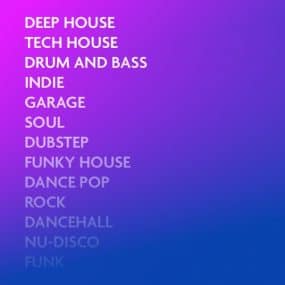 There are lot more genres beyond these four that make up the EDM sound, most notably genres like Trap, Hardstyle and Dub-Step, but I think its fair to say that the four I’ve mentioned are the biggest at the moment. So its likely you came to this page with a desire to learn how to DJ those kinds of sounds.
There are lot more genres beyond these four that make up the EDM sound, most notably genres like Trap, Hardstyle and Dub-Step, but I think its fair to say that the four I’ve mentioned are the biggest at the moment. So its likely you came to this page with a desire to learn how to DJ those kinds of sounds.
My advice still covers those other sub-genres, so this article still applies to you if you’re totally in to another EDM vibe. Whatever your preferred flavour of EDM the burning question now is just what are the best ways to mix EDM and whats the best equipment to DJ EDM music on?
As a DJ, there’s nothing more important than knowing how to mix. If you want to be an EDM superstar, then you need to practice your mixing chops until they’re burning red-hot. Here are six different mixing techniques that will help turn you into a professional DJ:
Making transitions from one song to another is an important part of DJing, but it can be difficult for beginners. One popular way to mix songs is called a cut mix and it involves using equalization (EQ) to lower or raise both tracks simultaneously so they fit better together.
There are two ways you can do this, which are known as a sidechain EQ and frequency masking.
With both techniques, you want to take out anything in common between the two tracks that you don’t want them to have in common. This can include mid-range frequencies like 1k or 2k, or high frequencies if there’s too much bass overlap between them.
Sidechain EQ and Frequency Masking
Sidechain EQ is a way to match two tracks together by using one as a gate for another. You simply find a frequency in one track that’s loud enough to be heard over your other track, and then use your other track as an opener for it. For example, you can mix from something with drum fills to a percussive element in another song. Not all DJ software can do this although its possible with external effect modules and some music production software.
Here’s a great explanation of how sidechaining can make a huge difference especially in EDM
Frequency masking is an alternative to sidechain EQing, but it’s much more subtle. This technique involves mixing two tracks that contain similar frequencies so they mask each other at certain points of a song and then reveal themselves again when you turn up or down one of them.
Generally speaking in music production this is something producers try to avoid in order to maximise the sounds within a track, but for DJing we can use it creatively to reduce the impact of some sounds.
The frequency masking technique works by having two songs with similar frequencies play at once, so that you hear one more clearly than you do another. When one track gets louder than another, it becomes less masked and more apparent. For example, if your kick drum is louder than your bass line during a breakdown, it’s going to stand out and be much easier to hear over your other track.
Key and tempo changes
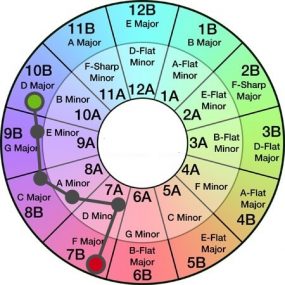 If you want to transition between a smooth melody and a hard-hitting beat, you could use key changes or tempo changes to create drama.
If you want to transition between a smooth melody and a hard-hitting beat, you could use key changes or tempo changes to create drama.
For example, let’s say that your first track is in G minor with a tempo of 140 BPM (beats per minute) while your second track is in C major with a tempo of 130 BPM. You could then create loops from both tracks to create a whole new creative sound to mask the transition.
Harmonic mixing is all about layering notes to create a new harmony. It’s not as difficult as it sounds, but it does take practice. You simply play two or more tracks at once and aim to hit each note of a chord with each track you use. For example, if you have a song in D major that you want to mix with one in G Major, try creating loops from each track and setting their playback speeds so they match perfectly and create new harmonies together.
You can then add other layers on top of them to make your mixes sound much fuller than before. This works especially well with EDM as there are immense amounts of harmonic sounds layered together.
Beware this doesn’t work for every track even if the harmonic keys should fit on paper, in reality they sometimes clash and can sound an overwhelming mess!
Effects
Combining effects is a great way to add creative flare over your layered loops and can build dramatic effect into your mixes. You can create just about any transition that you want using various preset effects built in to your controller.
I recommend taking time to go through every available effect and seeing how it sounds over the breakdowns of your set’s tracks.

Looping EDM samples
Loops are key to mixing tracks together with no time limits as you’re not using the entirety of the track. If you want to truly DJ using loops, you need to know how to use them creatively so that your sets sound more diverse.
A great place to start is to layer two or three at once over an existing track, as it’ll allow you to combine multiple sounds into one mix. This takes a lot of trial and error so don’t get downhearted when your first few loops don’t sound great.
Next you can layer effects on the loops to create entirely new sounds. Play around with the length of the loops to see what interesting new soundscapes you can come up with. Not only does it keep things interesting for your audience, but it will make you sound like a much better DJ than if all you did was press play on pre-produced tracks.
Here’s an awesome tutorial on one particular type of loop transition. One that many EDM DJs use. Check it out
This is one of the most powerful mixing techniques for EDM DJs so its one you should definitely get to grips with. It takes a lot of time and effort to find effects and loops that layer well and sound awesome, its even more tricky to pull this off in front of a crowd so be sure to practice practice practice!
Here’s a great tutorial on the subject of looping transitions for epic build-ups. This is a little different to just fading between loops so pay attention and see if this is a technique you’d like to use.
Mixing electronic dance music requires both smooth technical ability and creativity. With technology like MIDI controllers, Traktor or Serato DJ software, and digital audio workstations (DAWs) like Ableton Live. Or if you want to get even more hands-on with your mixing hardware, you can always use turntables or CDJs instead of a controller to mix your music.
If you’re just starting out and aren’t sure which type of controller or mixer is right for you, it’s worth pointing out that there are a number of options to choose from. Some DJs prefer all-in-one solutions like Pioneer DJ’s DDJ-1000, which comes with a built-in sound card and large touch screen display to make it easy to use on stage.
Pioneer DDJ-1000
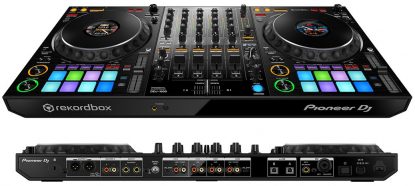 Pioneer DJ’s DDJ-1000 is a great example of a controller designed specifically for use with Industry leading DJ software thats perfect for EDM music..It features two physical decks, allowing you to do quick transitions between songs and play samples and loops on top of them.
Pioneer DJ’s DDJ-1000 is a great example of a controller designed specifically for use with Industry leading DJ software thats perfect for EDM music..It features two physical decks, allowing you to do quick transitions between songs and play samples and loops on top of them.
The hardware also has built-in sound card with 4 outputs for booth monitoring and sound system, as well as a total of 4 decks (2 virtual).
Here’s an awesome demo of EDM being mixed on the DDJ1000
Native Instruments’ Traktor Kontrol S8
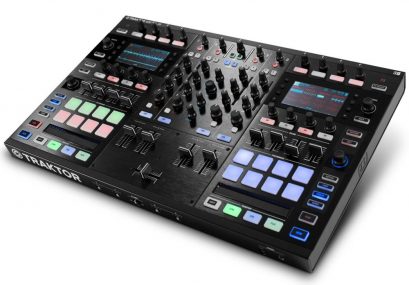 Next up, if you’re looking for something with more knobs and buttons to control your mixing, Native Instruments’ Traktor Kontrol S8 is a great choice. This large DJ controller features two full-sized jog wheels, along with a set of touch strips for even more performance capabilities.
Next up, if you’re looking for something with more knobs and buttons to control your mixing, Native Instruments’ Traktor Kontrol S8 is a great choice. This large DJ controller features two full-sized jog wheels, along with a set of touch strips for even more performance capabilities.
The hardware also has two built-in sound cards for latency-free audio playback through any mixer or PA system. More importantly, it can be used with Serato DJ or other software using its mapping mode to work like two separate mixers so that you can cue tracks independently on each deck—just like vinyl records.
Of course it works perfectly with Native Instrument’s very own Traktor Pro software which I recommend using to get the most out of this hardware.
Watch the Traktor Control S8 demo for a quick overview of its features.
Denon DJ Prime 4
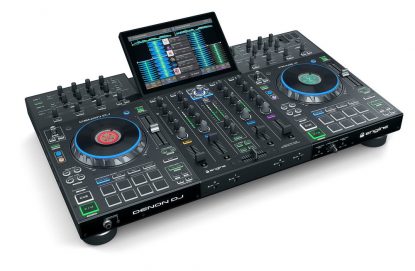 When it comes to high-end hardware, Denon DJ’s Prime 4 is another great option that features four full-sized jog wheels and a set of buttons for effects, looping and sample playback.
When it comes to high-end hardware, Denon DJ’s Prime 4 is another great option that features four full-sized jog wheels and a set of buttons for effects, looping and sample playback.
This is ideal if you are looking for hardware that can give you direct access to these capabilities without having to switch software modes or use a laptop. The Prime 4 also works with any Mac or PC as well as Serato DJ (though it will work in a limited capacity compared to other devices).
The Prime 4 has two built-in sound cards—one for each side—and an onboard 24 bit/96 kHz high resolution DAC along with two microphone inputs with volume controls.
At the moment this is one of my favourite DJ controllers as it really is the most robust and ground breaking of the controllers on the market.
This is a must watch if you’re considering the Denon Prime 4 controller. Pushing it to its very limits!
Other DJ hardware for EDM DJs
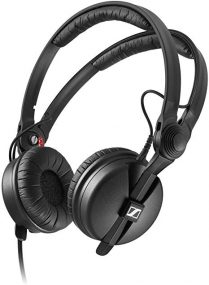 One of the most important pieces of equipment for any DJ is a high-quality pair of headphones. They allow you to cue up tracks and beatmatch with precision and are essential for checking mix levels on stage.
One of the most important pieces of equipment for any DJ is a high-quality pair of headphones. They allow you to cue up tracks and beatmatch with precision and are essential for checking mix levels on stage.
If you’re going to be playing in venues or festivals, it’s important that you get a pair of closed-back headphones that are specifically designed for monitoring in loud environments so that you don’t have to turn up your monitor too loud and risk causing hearing damage.
For smaller gigs at clubs or bars, open-back headphones may be more appropriate because they aren’t as isolating and will let you hear what’s going on around you.
Want to understand the difference between open backed and close backed headphones? This video will tell you everything you need to know.
You’ll also need some way to connect your DJ controller or mixer to a pair of powered speakers or a PA system for larger gigs. For most DJs, that means using RCA cables (often color-coded red and white) because they are easy to connect and carry balanced stereo audio signals without requiring external power.
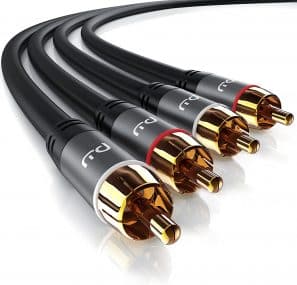 If you have multiple channels in your sound setup, it may be more convenient to use a microphone cable with 1⁄4 plugs on each end since you can get them in much longer lengths than RCA cables—though at the expense of some sound quality.
If you have multiple channels in your sound setup, it may be more convenient to use a microphone cable with 1⁄4 plugs on each end since you can get them in much longer lengths than RCA cables—though at the expense of some sound quality.
Lastly, don’t forget about getting an extension cord or extra power strip if there isn’t one available near your setup so that you can plug everything in.
We have an article all about the essentials you should take to any gig, including backups, tools. Don’t go to any gig without these!
If you’re interested in mixing electronic dance music and performing, look no further than these inspiring DJs who are taking EDM to new heights! They each represent a different area of dance music, so whether you’re more into house or techno there’s an artist here for you.
Diplo
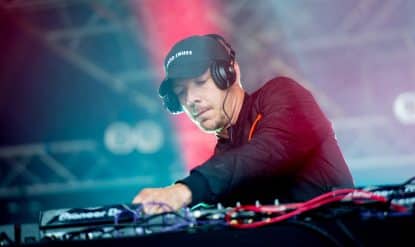 The biggest and baddest DJ in music today, Diplo has been a force in electronic dance music for over a decade.
The biggest and baddest DJ in music today, Diplo has been a force in electronic dance music for over a decade.
His remixes and collaborations have hit number one on Billboard several times and he has achieved Gold or Platinum status with every release. And when it comes to live performance?
He puts on an unforgettable show that wows fans across genres every time. The man has a sense of humour too. Check out this funny video.
Tiesto
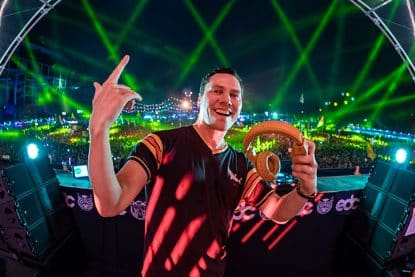 One of Tiesto’s most notable accomplishments is his annual club residency at Ibiza, which is legendary among EDM fans worldwide.
One of Tiesto’s most notable accomplishments is his annual club residency at Ibiza, which is legendary among EDM fans worldwide.
He has also produced and remixed for artists such as Nelly Furtado and Madonna, as well as performing with fellow DJs like David Guetta to create a different version of Love Is Gone. Tiesto has been awarded with six Grammy nominations and placed first in DJ Magazine’s Top 100 Poll seven times!
He’s also performed sold-out shows across Europe and Asia to massive crowds of over 40,000 people per show.
You’ll probably recognise some of this tune.
David Guetta
 David Guetta has made a name for himself not only as a house music producer but also as a DJ and an entertainer.
David Guetta has made a name for himself not only as a house music producer but also as a DJ and an entertainer.
He was awarded with five Grammy nominations in 2012, including Best Dance Recording and Album of The Year.
His singles often hit number one on European charts, so it’s no surprise that he’s made guest appearances at international music festivals from Glastonbury to Coachella. One highlight of his career? David Guetta performed for two consecutive nights during Tomorrowland 2014!
Skrillex
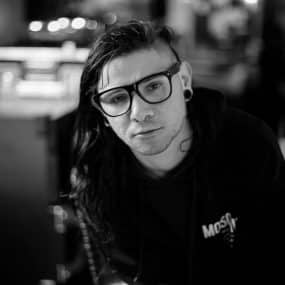 The DJ producer of Sonny Moore has made quite a name for himself in music.
The DJ producer of Sonny Moore has made quite a name for himself in music.
He was nominated for 5 Grammys and won 3 including Best Dance/Electronica Album, Best Dance Recording, and Best Remixed Recording Non-Classical.
Skrillex is no stranger to major awards, having achieved Platinum status with every release and hitting number one on various charts from Europe to Canada. And what about live performance?
In 2012 Skrillex performed during Coachella Valley Music & Arts Festival for over 100,000 fans! One of his greatest achievements was performing at Lollapalooza Festival in front of 75,000 people when he was only 21 years old!
Deadmau5
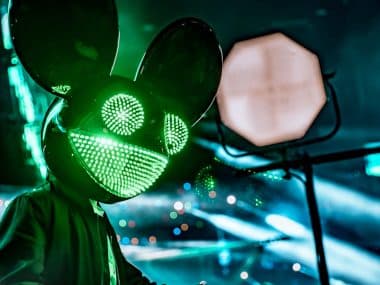 Deadmau5 is a DJ, electronic musician and composer who has created everything from progressive house to orchestral pieces.
Deadmau5 is a DJ, electronic musician and composer who has created everything from progressive house to orchestral pieces.
In 2008 he was named one of Rolling Stone’s 100 Most Influential People in Music, showing that his innovative ways have made an impact on music as a whole. Deadmau5’s latest album W:/2016ALBUM/ hit number three on Billboard 200 and was certified gold, giving him another first for a Canadian artist with Platinum status!
He’s won Juno Awards for Dance Recording of The Year and Electronic Album of The Year four times over his career. Deadmau5 also hosts an annual music festival in Toronto, where he performs live alongside artists like Eric Prydz.
Marshmello
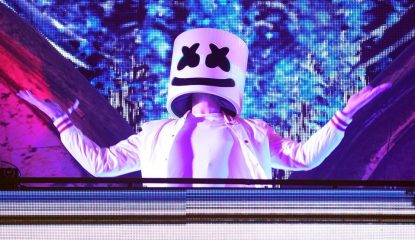 Marshmello is a DJ, electronic producer and electronic music artist from Philadelphia.
Marshmello is a DJ, electronic producer and electronic music artist from Philadelphia.
His biggest success so far has been his remix of Jack Ü’s Where Are U Now with Skrillex and Diplo.
He made his debut on Billboard Hot 100 at number 98 in June 2016, with Keep It Mello.
You can watch Marshmello live by checking out one of his sets from Amsterdam Music Festival or Lollapalooza Brazil.
Eric Prydz
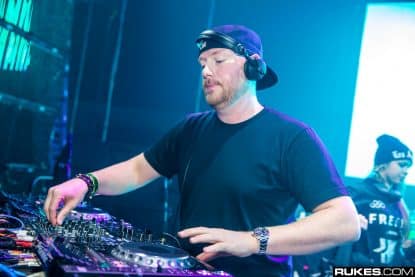 Eric Prydz is a DJ, music producer and an electronic music artist who is well known for his releases such as Call On Me. He is also known as Pryda and has released several tracks under that name.
Eric Prydz is a DJ, music producer and an electronic music artist who is well known for his releases such as Call On Me. He is also known as Pryda and has released several tracks under that name.
He’s been successful in a lot of ways – he’s won five Grammy Awards, including Producer of The Year.
What’s more, Eric Prydz holds 2 Guinness World Records – one for most shows performed worldwide in one year by an individual (152 shows) and another for longest consecutive sell-out at a single venue (5001 days at Cream Amnesia nightclub in Ibiza). It’s safe to say Eric Prydz knows what he’s doing!
More DJing advice for you
I hope you found this article about DJing Drum and Bass useful. Here’s some more articles I think would really help you take your DJing to the next level.
